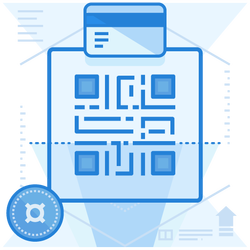How Are Zero-Day Attacks Discovered And What Steps Can Be Taken To Mitigate The Threat
A zero-day attack is a malware attack that manipulates a software security vulnerability of which the developer is not aware. Attackers can bypass your security through an uncharted software vulnerability. In many cases, it is only discovered after the attack has taken place, and the damage has been done. How the zero day-attack is discovered depends on the attacked software, as well as the team that works on it.

The Zero-Day Predicament
Generally, in most cases, if users find any flaw in computer software, they notify the appropriate professional or the organization concerned about the bug or vulnerability of that software. The developer is always on the lookout for any flaw and takes steps to prevent a zero-day attack. Still, if a malicious hacker finds the vulnerability before it is fixed, he tries to exploit it to get the information and data that he is not permitted to access. This kind of threat could put your business at critical risk. It is essential to use ‘evasion resistant technology’ to maximize zero-day protection.
What Does A Zero-Day Attack Mean?
A zero-day attack has become a severe concern for not only software vendors and developers but also users or even an entire country. Buying and selling crucial data has become a profitable business for hackers. Not only criminal hackers but government security agencies also try to get information by exploiting zero-day vulnerabilities. One can understand the severity of a zero-day attack through a zero-day attack example like this: Suppose an enterprise releases an e-commerce app, people share their personal information on the app for purchasing things. Although they claim to have a security protection system, a hacker who finds a flaw can use it to get personal information before the organization could fix it.


How Are Zero-Day Attacks Discovered?
In most cases, hackers use code to exploit zero-day. Sometimes it is discovered by an individual when the program behaves suspiciously, or the developer himself may recognize the vulnerability.
Attackers have found a new route by exploiting a zero-day vulnerability in Google’s Android mobile operating system. They can give themselves full control of at least 18 different phone models of which some of them are:
- Samsung S7
- Samsung S8
- Samsung S9
- Pixel 1
- Pixel 1 XL
- Pixel 2
- Xiaomi Redmi 5A
Apart from these models, there are many more models as per the zero-day vulnerability list 2019.
Zero-Day Attack Prevention
It is a nightmare for the people when they realize that they are under a zero-day attack. Even though organizations hire professional IT teams to protect their data, cybercriminals are gaining more potential by using advanced technology. Here are some zero-day attack prevention tips which could help your computer from suspicious malware and spyware.
- As the exploit may be very difficult to detect, maintaining a control policy to avoid attack and periodical revisions could be an excellent way to secure your information systems.
- Updating your software from time to time can prevent the risk. An update scan can show new exploitable vulnerabilities, but developers can fix the error on time. They can apply new security measures in each version of their programs. It is worth keeping everything updated and using the latest version of all software.
- A solution based on behavioral analysis could be another way of protection.
- Monitoring unusual program behavior keeps information systems and software secure.


Learning From Recent Zero-Day Attacks
A vulnerable network is always at the risk of being attacked. Even big organizations could turn their prey. Recent zero-day attacks prove Microsoft to be a favorite target for hackers as it has faced zero-day attacks many times. In the years 2017 and 2018, Microsoft detected vulnerability in the EternalBlue system, following which they released emergency security patches to block the flaw. In 2016, Acrobat reader was also under attack. They detected the fault, which was undiscovered until then. When it comes to an extreme zero-day worm, Stuxnet has been the severest. It targeted the supervisory control and acquisition system through the Windows operating system.
The most recently identified, highly targeted attacks were in Eastern Europe. One of the recent zero-day attacks – 2019 took place in June when vulnerability affected some older versions of Windows.
Conclusion
As we are aware, a zero-day attack is a big concern not only for software vendors and developers but also for individuals and even countries as hackers can put their hands on sensitive information. Discovering a zero-day vulnerability is hard but crucial. By following the aforementioned protection and prevention tips, one can safeguard one’s systems and minimize the risk of a zero-day attack.

Enterprise-class email protection without the enterprise price
For flexible per-user pricing, PhishProtection’s integrated email security solution protects your employees from business email compromise (BEC) and many other email threats. 24×7. On any device. With features you’d expect in more expensive solutions:
All Plans Come With
- Stops business email compromise (BEC)
- Stops brand forgery emails
- Stop threatening emails before they reach the inbox
- Continuous link checking
- Real-time website scanning
- Real time alerts to users and administrators
- Protection with settings you control
- Protection against zero day vulnerabilities
- Complete situational awareness from web-based console
Join 7500+ Organizations that use Phish Protection
Phish Protection works with System Administrators, IT Professionals and IT Executives in thousands of companies worldwide. Sign up and protect your organization from phishing attacks in less than 5 minutes



